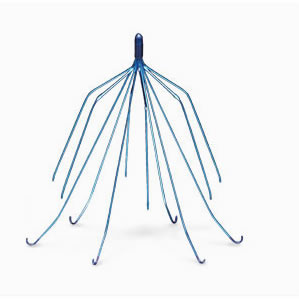
Inferior Vena Cava (IVC) Filters are an alternative to traditional anticoagulants, a type of blood thinner. These filters were designed to prevent blood clots occurring in different areas of the body from travelling to the lungs. Following multiple investigations, manufacturers of various IVC filters have been accused of defectively designing these filters in a way that leads to potential complications. Defects in the design of IVC filters may make them more likely to fracture, migrate, or perforate the inferior vena cava (a large vein that carries blood to the heart), causing life-threatening injuries.
What is an IVC Filter?
An IVC filter is a spider-like filter containing several struts, which appear as long legs, that slowly expand within veins to prevent a pulmonary embolism (PE). A pulmonary embolism is a dangerous and sometimes fatal condition that occurs when a blood clot travels to the lungs, which can lead to death. The standard treatment in preventing this condition involves using anticoagulants to help prevent blood from clotting. However, many people cannot take anticoagulants due to the serious risks of uncontrollable bleeding. For example, individuals with kidney or liver disease, who have high blood pressure, or who lead an active lifestyle that may lead to physical injury have a higher risk of a bleeding incident.
To help treat these individuals, IVC filters were created as an alternative. While there are generally two types of IVC filters, permanent and retrievable, retrievable IVC filters have increasingly become the subject of litigation due to their defective design. Retrievable filters are filters that can be placed inside patients who display high risk for PE. Although these devices are supposed to be designed to be retrievable, retrieval can be difficult and sometimes unsuccessful. IVC filters that are not removed may be associated with dangerous complications.
From 2005 to 2010, federal regulators received over 900 reports of complications arising from retrievable IVC filters. While doctors were informed of the need to remove these filters, the filters’ design made this difficult for doctors to do. In 2005, a study in the Journal of Trauma found that removal of the Cordis OptEase Filter became virtually impossible after only 14 days because the struts started to puncture the vein. A 2010 study in the Archives of Internal Medicine found the Bard Recovery Filter to have a 25% rate of fracture, and a 2013 study in the Journal of Vascular and Interventional Radiology found the Günther Tulip Filter to have a 43% rate of perforating the vena cava wall. These studies outline inherent flaws with the designs of many of the IVC filters in use, finding generally that the longer the filters stay inside a person, the higher the rate of complications.
Possible side effects of IVC filters include:
- Device migration (if the device shifts position, it may become ineffective at blocking blood clots)
- Filter fracture
- Persistent pain
- Shortness of breath
- Chest pain similar to a heart attack
- Perforation of tissue, including damage to heart or lungs
- Death
Your IVC Filter Lawsuit:
Many IVC filters were approved without any clinical tests for safety and effectiveness through an expedited approval process with the Federal Drug Administration (FDA) known as 510(k) approval. A 510(k) application only requires that the tested medical device be “substantially equivalent” to a device already on the market. For example, Bard was able to take advantage of this loophole for approval of its G2 filter because it was familiar in design to the older Bard Recovery IVC filter.
Manufacturers of these filters have continually tried to have claims against them dismissed, but these efforts to thwart responsibility for injury have repeatedly been struck down by courts across the country. Lawsuits are currently underway, while many others have been settled between manufacturers and plaintiffs. Additionally, several IVC filter claims have been consolidated into multidistrict litigation (MDL), which groups together plaintiffs with similar claims to help conserve resources and settle matters more efficiently. Although many IVC filter lawsuits have been consolidated in MDLs, you can rest assured that the experienced attorneys from Pope McGlamry will handle your case individually. Patients may be entitled to compensation for medical expenses, lost income, lost future earning capacity, emotional pain and suffering, permanent disability, and also funeral expenses in the case of death.




